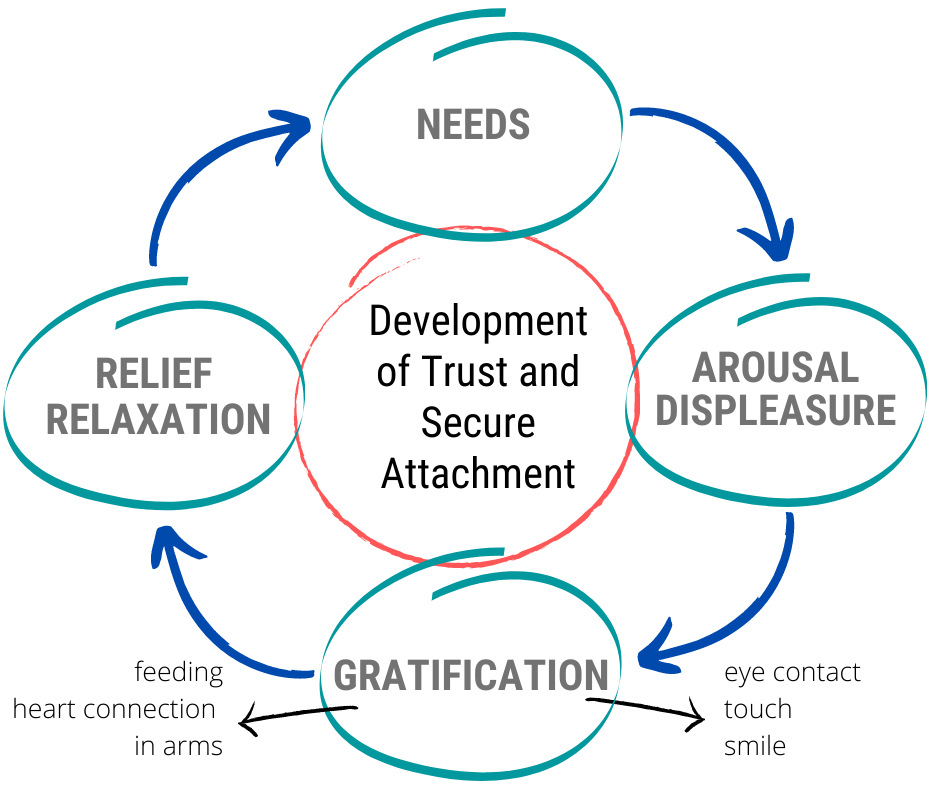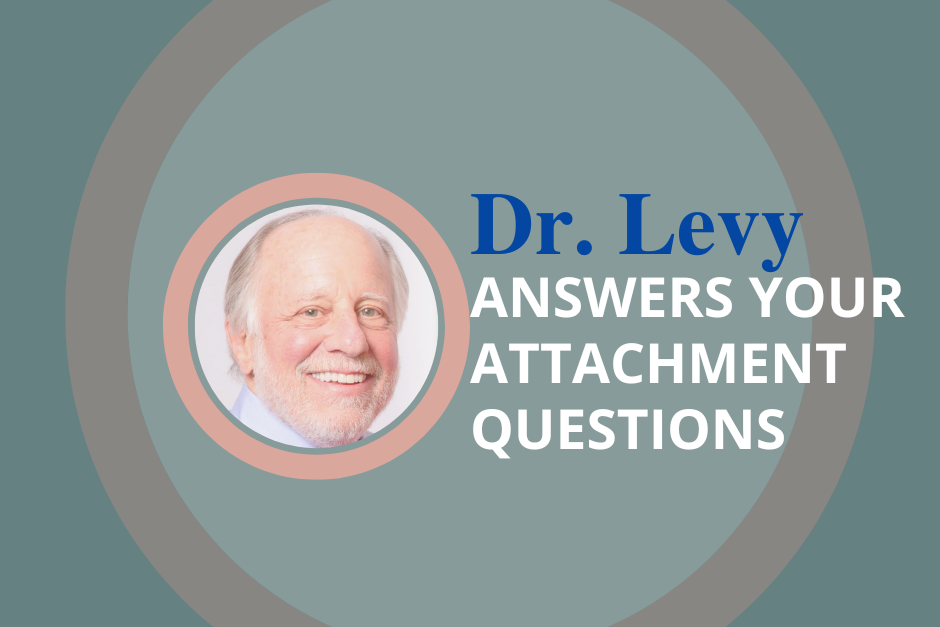Each month, Dr. Levy answers a common question he has received from professionals, caregivers and parents during three decades of pioneering work on attachment theory, treatment and training.
Many reciprocal interactions are infant-initiated during the first year of life within the context of the ongoing attachment cycle.
A newborn baby’s nervous system is not well-organized. It is through the mutual give-and-take between infant and caregiver that organization and development occur. For example, the baby’s smile brings joy and pleasure to the enchanted mother, motivating her to cuddle and stay close. Conversely, the mother’s familiar smile soothes and relaxes her baby. Her love and sensitivity actually regulate her baby’s body and brain. By 3 months of age, more than 50% of the moods and behaviors of mothers are influenced by her baby, while 40% of the infant’s behaviors are a reaction to mom. Mothers and babies continuously affect each other in this dance of reciprocity.
This reciprocal relationship relies on the baby’s ability to communicate needs as well as the parent’s ability to accurately read their baby’s signals and respond in a timely and sensitive way. The First Year Attachment Cycle begins with the infant communicating their need through an expression of arousal or displeasure (crying, facial expressions, motion) and is completed by the caregiver’s response to meet the need. Through the ongoing alleviation of arousal and discomfort and the gratification of basic needs, the baby develops trust and security – essential to secure attachment. This also directly affects a child’s developing sense of self, impulse control and ability to form loving and compassionate relationships in the future.

Key Components of the First Year Attachment Cycle
CRYING – A primary function of crying is to communicate discomfort to the caregiver. There are four types of infant crying: hunger, pain, danger and neurological impairment. Caregivers who respond promptly, sensitively and consistently to their infant’s cries have babies who cry less in frequency and duration as they grow older. Crying is the baby’s way of signaling to the caregiver that they have a need. When the baby’s need is met, they learn that the caregiver is dependable. This is the basis for secure attachment.
EYE CONTACT – The caregiver-infant gaze is a primary social release and communication method for the development of attachment. A newborn can focus their eyes 7-12 inches, the exact distance needed to make eye contact in arms. Soon after birth, the infant can follow a slowly moving light and the movement of curved objects that have qualities of the mother’s face. Face-to-face proximity and eye contact are synonymous with closeness and intimacy and the infant’s response to eye contact is instinctual. The infant gazes into their mother’s eyes and receives potent messages about her emotional state and level of involvement. Eye contact and observing facial expressions are main sources of information about others’ feelings.
TOUCH – All warm-blooded animals are born with an innate need to be touched and stroked affectionately. Touch for the human baby serves both physical and emotional functions. Touch is an essential form of reciprocal communication between parent and baby, affecting emotional, social, cognitive and physical development. The best way to provide comfort is via touch, especially when someone needs consoling. Cuddling a crying baby to soothe them is another example of a parent responding to a need and meeting it. The language of touch can deeply communicate our feelings and inspire connection.
Previous articles addressed questions about the Seven Functions of Secure Attachment, the Dependency Paradox, the importance of talking about trauma, traits of successful and healthy adult relationships, the importance of hope as a part of treatment for trauma, the core concepts of child development, parenting strategies for deescalating conflict, the importance of touch to fostering attachment, the 10Cs of Healing Parenting, why family rituals and routines are important, the seven steps of anger management and the importance of “looking in the mirror” for healing parents.



This is wonderful about the article. The process and techniques are valuable and benefiting for understanding the children and to manage it as well. The targeted people, especially the parents and children would be benefitted from the article and the consequence goes for the development of the children. Whether the reader feels interested, there are some other process and techniques of the same area:
https://explorer-bd.com/relationship-between-baby-and-caregiver/